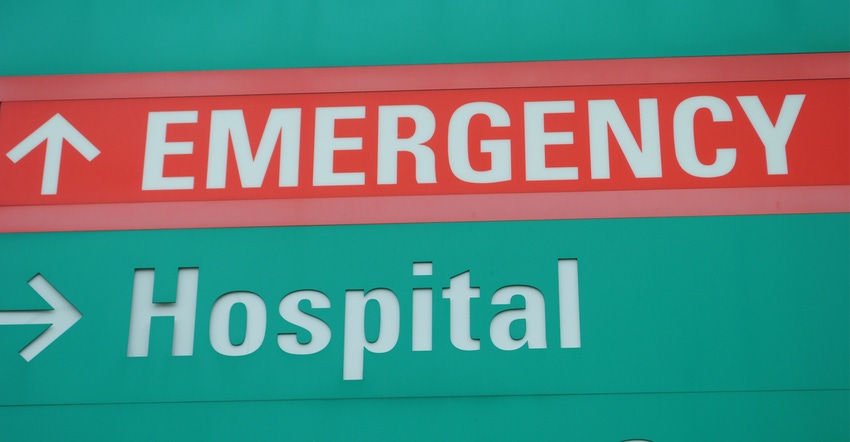
While some rural towns and neighborhoods might be tempted to believe they are isolated from the COVID-19 pandemic, there are two converging facts that make rural areas more susceptible to the most frightening aspects of the virus spread.
The average age in rural areas of the U.S. is often more than 60 years old — perhaps the most vulnerable demographic to the worst symptoms of the virus — and rural hospitals generally are smaller and lack the capacity for a huge influx of patients needing intensive care facilities and health care at the same time.
There are many unknowns as the outbreak spreads. How many people will be infected? How many providers could be needed? What will the demand be for intensive care and ventilators? While the health care industry grapples with these questions, rural health officials, in particular, are concerned.
“More than half the counties in America have no intensive care beds, posting a particular danger for the millions of people who are 60 and up — older patients who face the highest risk of serious illness or death from the rapid spread of COVID-19,” says John Roberts, executive director, Nebraska Rural Health Association.
“In Nebraska, roughly 25% of counties have no hospital, let alone intensive care unit beds. Rural Nebraska hospitals have plans in place to transfer cases they can’t handle to other facilities, though some patients may be too ill to risk the move.”
Roberts also is concerned that if one or two nurses or doctors need to be quarantined because of COVID-19 in rural communities, this will heavily affect the ability of the local health care system to treat patients and combat the virus.
“To be sure, rural hospitals are not as equipped as larger hospital systems to handle the most serious COVID-19 cases,” he says. “Many are not outfitted with ICUs or enough doctors and staff to handle multiple intensive care patients. That means they have to transfer those patients to larger hospitals.”
Rural hospitals are required to have emergency operating plans in the event of a crisis. More than 90% of the hospitals in the U.S. use some form of the Hospital Incident Command System, which helps hospitals and health care professionals prepare for and react to disasters by establishing a clear chain of command.
“Nebraska has a high level of cooperation between providers, which is essential during this COVID-19 outbreak,” Roberts adds.
Because of a combination of steep policy pressures and economic challenges, rural hospitals have had tough times over the past decade. “Nationally, more than 120 rural hospitals have been forced to close over the past decade,” Roberts says. “Nebraska had only one hospital close during this same time period, but many hospitals in rural Nebraska are struggling with low or quickly declining operating margins.”
The most recent data, Roberts says, shows that 39 out of the 71 rural hospitals in Nebraska have a 2% or less operating margin. Twenty-nine rural hospitals in the state operated in 2018 with a negative operating margin, and 22 of those have -3% or worse operating margin.
“So, the added financial hit from the coronavirus outbreak could be the final straw for many rural hospitals,” Roberts notes.
That said, telemedicine available today is sure to help in the fight against COVID-19, especially in rural areas. In Nebraska, the telehealth network is a collaboration of more than 110 sites — including hospitals, health departments, mental health centers, physician offices and rural health clinics — with the purpose of using video technology to extend health care resources to those in need.
“Recently, the U.S. Centers for Medicare and Medicaid Services announced it was broadening access to telehealth services for Medicare, which is the federal health insurance program for individuals over 65,” Roberts says.
Rural hospitals have a crucial role to play in the outbreak, Roberts says. “Rural facilities could be places for initial triage or eventual recovery care,” he says. “I could argue that critical access hospitals in the state could be leveraged to keep potential COVID-19 cases out of the major hospitals.”
About the Author(s)
You May Also Like






